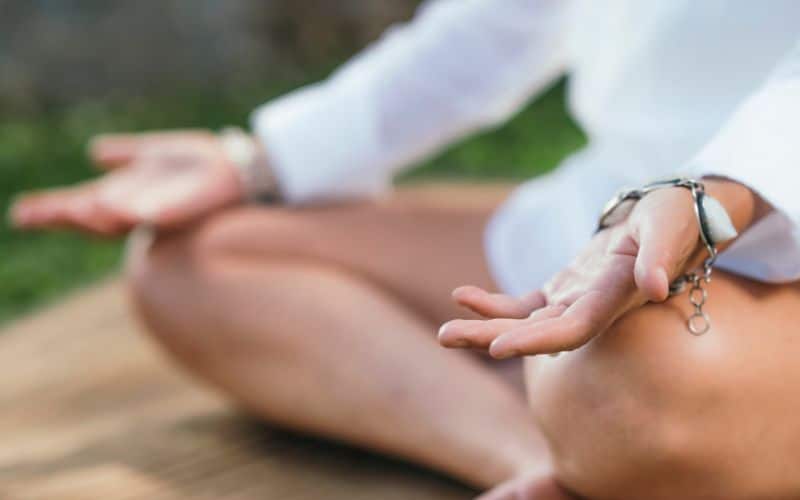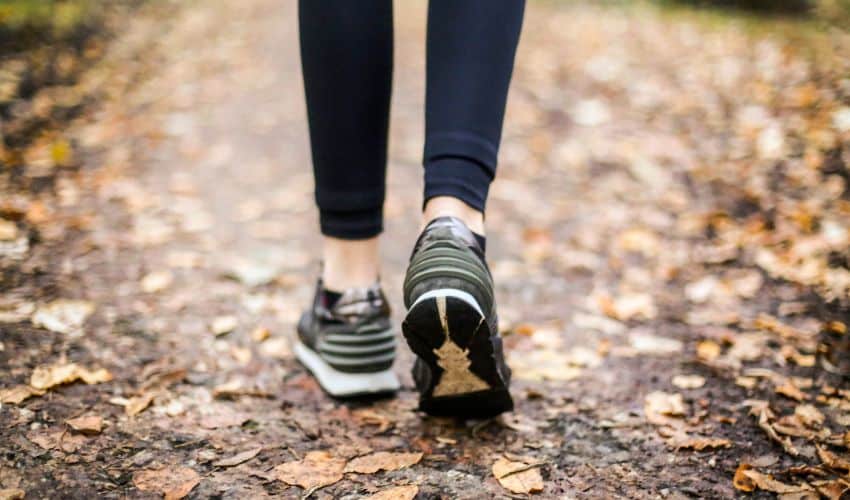When we think of meditation, it's common to imagine someone seated in a cross-legged position. Maybe they’re still and focused with their hands crossed in their lap. Let’s consider that position the mascot of meditation. While it is a common and useful position, there are numerous ways to arrange yourself.
A meditator needs to remember that meditation is about awareness and attention, more than it is about “sitting still”. The Buddha taught mindfulness in 4 meditative positions: sitting, standing, walking, and laying down. Some experienced meditators might practice as they are washing dishes or brushing their teeth. The main goal is to bring an awakened sense of observation to your activity, whether you’re sitting watching your breath, or walking around a garden.
Changing your position in meditation can be something you investigate on a personal need basis. Maybe you like laying down meditation but are very tired one particular night. In this case, you might choose walking or standing so you don’t fall asleep. Just know, there is no such thing as a “professional” meditator. There is only practice. Feel free as a beginner or seasoned practitioner to try out the different positions explored in this article.

Sitting Meditation Positions
Sitting is the most common meditation position. If you go on a meditation retreat, you are likely to learn seated meditation. At first glance, it may seem everyone sits cross-legged, but there are many ways to arrange those knees and ankles. Some positions are for more flexible people. Other positions are suitable for those with poor circulation. All of the following seated positions help the meditator maintain an erect posture and stretch the muscles. Sitting also consumes less energy.
Cross-legged position
This is the typical sitting style, sometimes called quarter-lotus. With your bum on the floor, you cross one leg over another, putting your left ankle under your right knee and vice versa. It is easy to learn, and comfortable.
If you feel pressure on the lower spine, take a folded blanket and put it under the coccyx. This makes sure you are not rounding your lower back.
Lotus position
This is another cross-legged position with a special flair. It resembles a cross-legged position, except each foot is placed on the opposite thigh towards the hip joints. It helps stretches your ankles and knees, keeps the spine straight and promotes sharpened awareness. This fabulous hip opener can be challenging for those with limited hip flexibility. If you can not get it right away, try hip-opening stretches to create more flexibility. Do not try if you have issues with your hips and knees or find this pose painful.
Half-lotus position
To get into half-lotus, recall the foot position of full-lotus and apply it to one foot. This position starts as a regular cross-legged pose with one foot (right or left) up on the thigh towards the hip joint.
This is a great position if you want to work your way up to full lotus. Half-lotus can stimulate digestion and promote circulation in the pelvic region.
As with full-lotus, be gentle when working your way into this position. Do not cause undue strain on your knees. In case of difficulty, perform hip-opening stretches.
Seiza position
Seiza is a Japanese kneeling position. With the tops of the feet flat against the ground, you will sit back on your heels. In case of ankle joint pain, perform this with a cushion between your feet and butt. In case of knee pain, you can sit on a block between your heels.
This position opens up the knee and ankle joints. It corrects your posture and engages your core muscles.

Lying Down Meditation
Lying down meditation is the most effortless of the four meditative positions. It puts the least amount of strain on the body and sets the tone for a relaxing practice. Why would anyone NOT do this? I’m glad you asked. After a long day, this meditation pose could turn into a long nap. Make sure to practice with awareness!
Savasana (Corpse position)
This position requires the least bodily effort. In savasana, you lie on your back with your palms facing up. The corpse pose can reduce all muscle tension, calm the nervous system, improve circulation, and relieve fatigue.
While there are few physical challenges to this position, it is common for beginners to fall asleep in savasana. One way to combat sleep is to practice savasana with a guided meditation recording.

Standing Meditation
Standing meditation is as simple as it sounds. It is beneficial for maintaining focused attention and can keep you toned as you meditate.
Basic standing position
Stand in one place with your knees slightly bent. Put your legs shoulder-width apart and distribute your weight evenly over the balls of your feet. You can put your hands by your sides. This position is helpful for those with back pain, insomnia, and low energy. Standing meditation keeps you alert and ensures your lungs can expand to their full capacity. You can maintain this position according to your level of physical fitness. Those who stand up for work might be able to meditate longer in the standing position than those who are sedentary.

Walking Meditation
Right off the bat, walking meditation is beneficial as a mindfulness practice that involves healthy physical activity. You can practice walking in a small circle, back and forth, or long distances. For long distances, it is recommended that you keep your eyes open.
It is common practice to focus on the feel of the feet picking up, moving forward, lowering and finally touching the ground. You can alternate your focus from one foot to another. This practice can help you manage stress, stay in shape, and improve your mood. It is suitable for beginners and experienced meditators alike. Feel free to practice mindful walking if you have pain or discomfort while seated.
Tips For Improved Meditation Posture
It is no secret that an aligned body creates ease and clarity. A study was done measuring the effect of stress on two groups seated in two different postures. The first group was seated upright while the second group was slumped. They proceeded to take the Trier Social Stress speech task and emotional assessment while seated in their respective positions. Findings concluded that those seated in an erect posture reported greater clarity, higher self-esteem, and increased positive moods. They also used more positive language and articulate themselves better than the slouched group. Are you inspired to sit up straight yet? Here are some tips!
Tips for Finding the Right Meditation Position
As the meditator, finding the best position is a personal exploration. There is no superior position. Here are some points to consider as you learn more about the pose that best supports your meditation.
FAQs on Meditation Positions
What Is The Proper Meditation Position?
The proper meditation position allows you to be both relaxed and aware. Seated meditation may be beneficial to one person and painful for another. Explore the styles and get to know your body in action.
What Are The Best Meditation Positions For Beginners?
The best meditation position for beginners is the cross-legged seated position. Beginners risk falling asleep lying down or becoming too distracted while walking. Most meditation courses teach seated meditation, so the resources for optimizing your seated position are bountiful.
Can I Do Meditation In A Sleeping Position?
It is possible to meditate while lying down. Whether it’s on your back, your side, or your stomach, you can practice meditation. You can do breathing meditation, visualization, or a body scan/muscle relaxation. Do not meditate in a “sleeping position” when tired.
How To Meditate Lying Down Without Falling Asleep?
Using a guided meditation track can help you maintain alertness. Another person’s voice can help prevent you from drifting off to sleep.
Why Do Meditation Positions Hurt My Knees?
Your joint rotation in the knee can cause pain and discomfort when sitting in meditation. A lack of flexibility may also cause it due to age or exercises without stretching.
How Do I Mitigate Knee Pain In Meditation?
Flexibility is important. Many different stretches can help your knees prepare for meditation. Many yogis also use pillows under their knees to reduce the effects of gravity pulling them toward the ground.
Conclusion
Continued meditation has the potential to positively affect the quality of your life. Since there are numerous styles and positions in meditation, finding a suitable practice is just a matter of exploration. Mindfulness and meditation are mood enhancers, pain relievers, and sleep improvers, among numerous other benefits.
Postural ease and awareness are two ingredients required to bring a non-judgemental presence to your inner world. It is worth taking the time to explore different ways to position yourself for comfortable, advantageous meditation.












